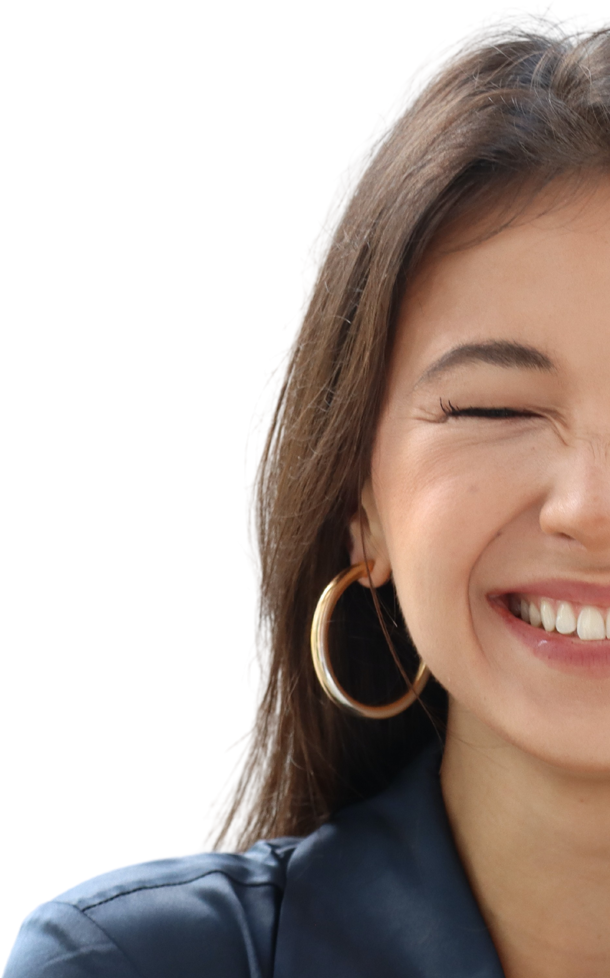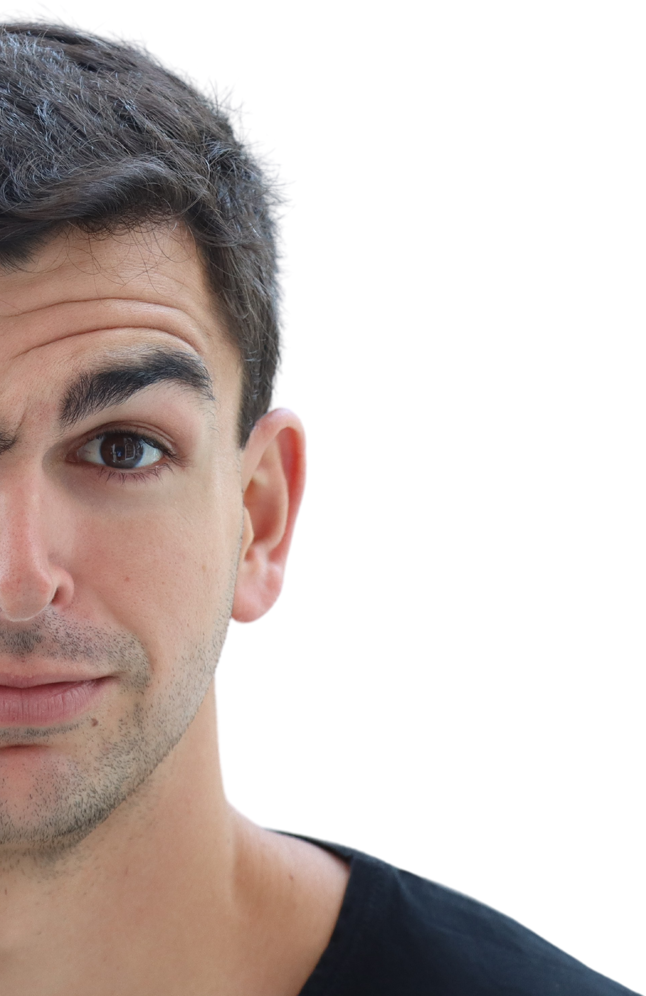 Sign up
Sign up


Stay wrinkle free and maintain your expressivity
Let's talk science
What causes wrinkles?
What causes wrinkles?
- As we get older our skin elasticity and collagen decrease, predisposing us to wrinkles
- There are, however, causative factors that we can control (yay!) one of which is our Facial Expressions (embrace the poker face?)
- Each time we use a muscle, a groove forms beneath our skin’s surface. As skin ages, it can’t spring back in place as well, so the groove becomes a permanent feature of the face, and ta-dah, a wrinkle forms
- There are 2 main types of wrinkles: -Dynamic: these form when you make a facial expression and are not there at rest -Static: these are there all the time
- Dynamic wrinkles progress into static / permanent wrinkles over time. Think about it as a piece of paper you fold – the more times you fold and unfold it, the more permanent the crease
- Other important factors are UV radiation (even when it’s cloudy), smoking (no shockers here), not sleeping or eating well (get your greens on!), and stress
What is Botox?
What is Botox?
- Botox is a protein that relaxes muscles and as such (i) decreases the appearance of static /permanent wrinkles and (ii) prevents dynamic wrinkles from transitioning to static ones
- It acts through blocking chemical signals that cause muscles to contract
- Botox is actually a trade name and there are 4 FDA approved versions: Botox, Dysport, Xeomin, Jeuvau(we use the term Botox here for simplicity)
- Preventative Botox catches dynamic wrinkles before they convert to static/ permanent ones. It is promoted by Key Opinion Leaders in the Healthcare & Dermatology space as it is highly effective and can decrease the need for more invasive procedures later on
- Preventative Botox patients are younger (25-35) and get smaller amounts of Botox (baby Botox) less frequently (2-3 times a year) than traditional Botox patients
Does it hurt?
Does It Hurt?
- The injection may sting and cause a slight discomfort, but the feeling is fleeting
- A very small needle is used (<0.03inches) and many compare it to a “pinch” and say it is “less painful than laser”
- Each pinch lasts a few seconds. There syringe sometimes makes a sound – something like crunching boots on snow – so don’t be alarmed
- Topical numbing gel can be applied beforehand if needed
How long does it last?
How Long Does It Last?
- It takes 3-10 days for Botox to take full effect
- The effects typically last 3-6months after which patients can get a repeat procedure
- Botox is completely expelled from your body within 6 months so there is no cumulative effect of long-term use
Is it safe?
Is It Safe?
- Botox is considered a safe and low risk procedure
- When performed by trained professionals side effects are rare. The most common side effects include swelling / redness at the injection site and minimal bruising (<5%) and disappear either the same day or after a couple of days
- Botox has been used for non-cosmetic treatments regularly since the 80’s so it’s long-term side effect profile has been studied excessively (over 3,000 papers). It was approved by FDA in 2002 for cosmetic use and designated as safe for long term use
- You may have heard of side effects such as “droopy features” or “frozen face”, these are extremely rare and have to do with providers using larger than needed quantities of Botox, incorrect placement of Botox or Botox migration. Although very uncommon, this does emphasize the importance of selecting a provider who is appropriately qualified and well trained in facial anatomy
What happens if I stop?
What Happens If I Stop?
- Botox can be stopped anytime! Muscles and skin do not make up for “lost time” by accelerating the aging process, so regardless of follow up the aging process is delayed
- Botox is not physically addictive and when you stop, the normal aging process re-starts
- 3. Wrinkle formation goes back to the way it worked prior to the Botox treatment and muscle movement returns to normal
- Upon stopping Botox your muscles eventually start working as they did before. (There may be lag benefits as you have trained your face to use muscles less, so you slow down the rate of wrinkle formation versus your previous baseline.)
- Sometimes people forget their pre-Botox “baseline” skewing their perception so we encourage patients to take pictures over time
What else works?
What Else Works?
- There are thousands of creams out there and we know it can be overwhelming to choose what to use and to understand what works!
- There is a huge difference between OTC treatments and prescription treatments. OTC creams and serums are NOT classified as drugs so they are not required to undergo stringent scientific research to prove effectiveness. The FDA sees them as cosmetic products so doesn’t guarantee reduction in wrinkles
- Careful of phrasing such as “reduce wrinkles” versus “reduce appearance of wrinkles”
- Prescription vitamin A creams: These are proven to be effective in wrinkle reduction. Vitamin A causes an increase in collagen production and a reduction in collagen and elastin breakdown. OTC retinol is commonly used but not enough studies to determine whether effective or not, although studies do say it works but has a weaker effect
- Sunscreen: UV light from the sun causes the breakdown of collagen and elastin. This happens even if you can’t see the sun! SPF helps stop this process; dermatologists recommend using SPF 30 or more that is broad spectrum (UVA and UVB protection) with frequent reapplications
Do I need recovery time?
Do I Need Recovery Time?
- No downtime is required. You can return to work / university straight after your appointment. You might have little red bumps at injection sites for up to an hour, but these typically disappear within minutes. While bruising may occur, it is rare and temporary
- Typically, providers will advise: no exercise for 12-24 hours, minimize touching injected areas for 12 hours (to avoid spreading), and reduced alcohol / caffeine / ibuprofen or aspirin the night before (to minimize or avoid bruising and swelling)
- You can apply makeup directly following the procedure but should avoid rubbing cream at sites
